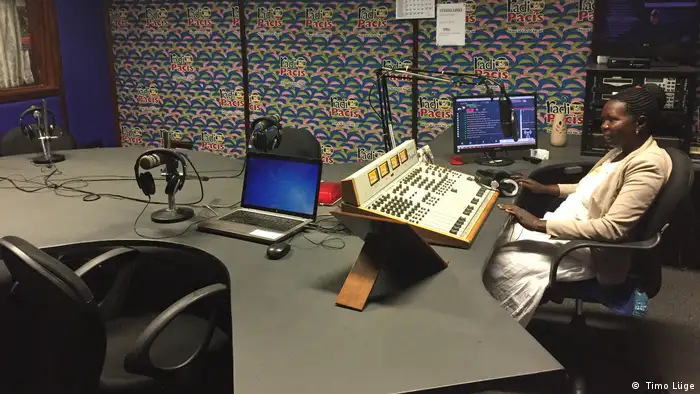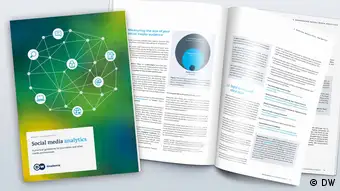TWEETS, SHARES AND THE LIKE
Social media analytics: New guidebook for small media outlets
Tips, tricks, and tools that help small media outlets boost their social media presence and audience development.
Gaetano Apamaku had ambitious plans. “We used to be at 15,000,” the Radio Pacis station manager says, recalling the number of Facebook likes they had garnered over the years. His goal: To overtake their major competitor in the West Nile region of Uganda, which had 20,000 followers. Apamaku and his team used analytics to track the success of their social media activities and to improve them continually. The result: Today they stand at over 36,000 page likes and have the biggest following in the region. But Gaetano knows that there is always room for improvement: “Now we want to see how we can do tracking better.”
Like Pacis FM, many media outlets in the Global South are grappling with the impact of digital transformation. With the young generation increasingly online and using social media, managers see the need to become more active in supplementing their offline broadcasts with online content, engaging in community building activities on social media. If these efforts are to be more than just trial and error, social media analytics requires a systematic approach.
New DW Akademie guidebook
To this end, DW Akademie has published a Social Media Analytics Guidebook, drawing insights from the activities of six partner radio stations in four African countries. The results are based on a client-centered approach that involved looking over the shoulder of people like Gaetano Apamaku – people who are engaged in positioning their small rural community radio station in the digital sphere. Generally, the guidebook caters for the needs of small and medium-sized media outlets with an emphasis on social media analytics. It focuses strongly on Facebook, but also contains useful tips on Twitter and YouTube analytics, as well as user data analysis for WhatsApp.
The book also introduces the most important key performance indicators (KPI’s) and guidelines on how to develop your own benchmarks. It is based on the needs of small African media outlets, but its conclusions can be applied to other contexts as well. The guidebook is useful for outlets that are active on social media but have little or no experience in analytics reporting.
For a quick overview of some key tips for media houses drawn from the guidebook, check out this article.
Trade-off between social media analytics and privacy
The guidebook was compiled by Timo Lüge, a social media expert and author of the blog Social Media for Good. #mediadev put three questions to him concerning social media analytics:
mediadev: Social media analytics are very useful for media outlets. At the same time, social media are criticized for neglecting people’s privacy. What’s your take on that trade-off?
Timo Lüge: That is a very difficult question. I think we will see an ongoing debate around privacy for the next couple of years. Regulatory instruments such as the privacy regulations that the European Union introduced recently can help to set global standards. At the same time, I think people need to be educated much more and better so that they understand what repercussions it can have for them if they are too careless when using social media.
The guidebook you authored is aimed at small and medium-sized media houses. Your own background, however, is in humanitarian aid. Can you tell us something about how digital analytics are used for humanitarian campaigns and communication in crisis?
One of the most common uses is for quantitative analysis to get an impression of the needs following an emergency. This means that humanitarian agencies and volunteers count how often certain needs are being expressed on social media.
For example, how often people are saying on social media that they need shelter or medicine. Of course, this does not replace an on the ground assessment, but it can inform the overall assessment of the situation. Later social media analysis is often used to get an impression of how the response is being perceived by the people being assisted. So, for example, whether people report problems in how aid is being delivered or whether the aid is not fit for the purpose.
Now that the guidebook is done, what would the logical next step be, in terms of social media analytics tools? Anything up your sleeve?
Having the guidebook is great, but I think the next step needs to be to fill it with life by using it as a basis for trainings. No guidebook can ever replace a good teacher. I hope the guidebook will be used by many people to deliver social media trainings around the world.
Text and interview: Dennis Reineck
DW recommends
WWW links
Downloads
- Date 18.07.2019
- Author Dennis Reineck
- Feedback: Send us your feedback.
- Print Print this page
- Permalink https://p.dw.com/p/3MCdU
- Date 18.07.2019
- Author Dennis Reineck
- Send us your feedback.
- Print Print this page
- Permalink https://p.dw.com/p/3MCdU



